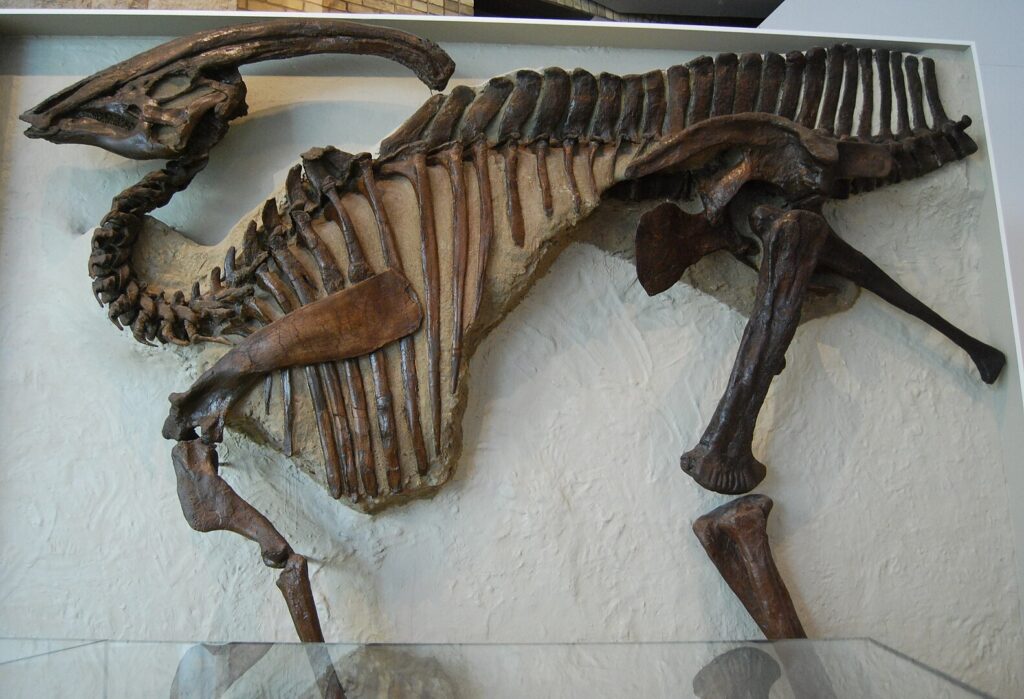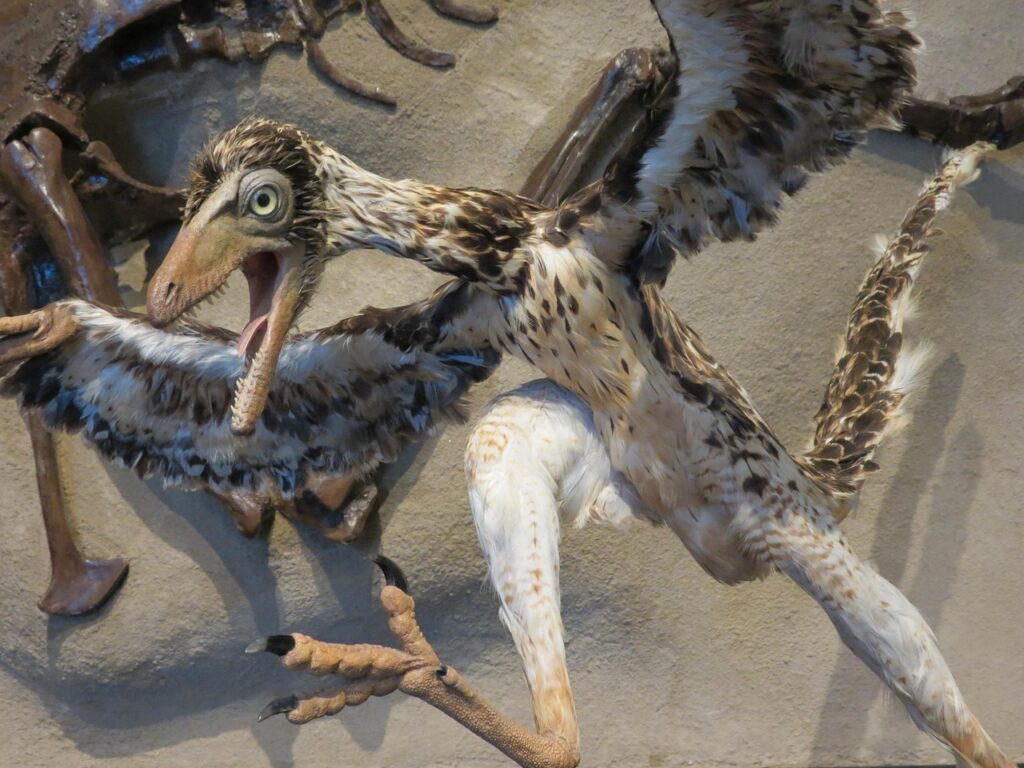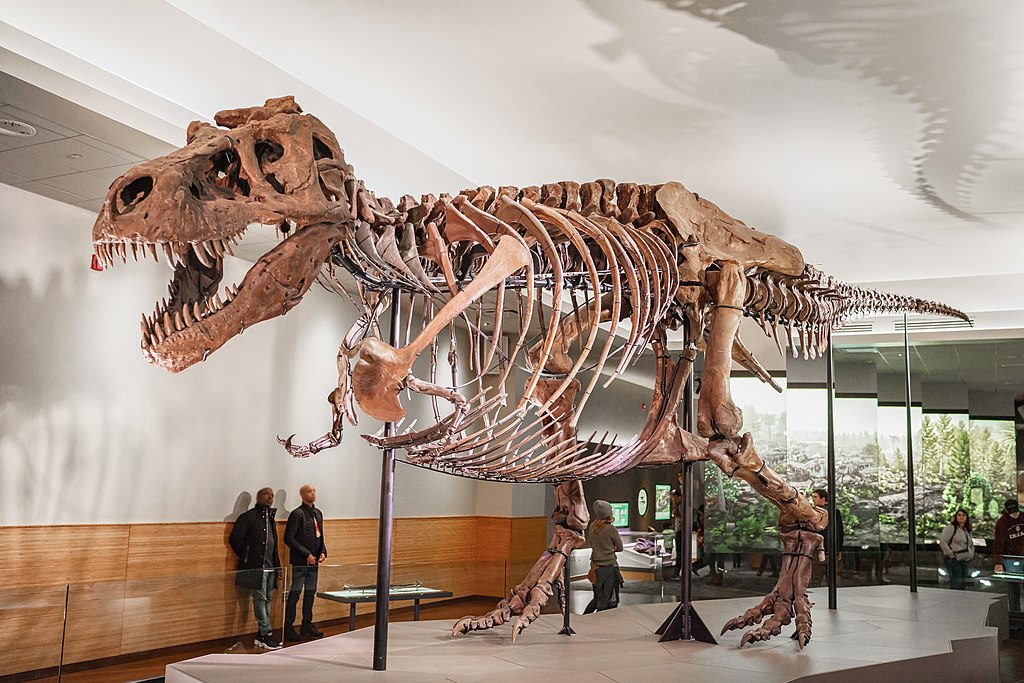In the vast pantheon of prehistoric creatures, few have captured scientific imagination quite like the crested dinosaurs. Among these remarkable reptiles, one stands out for its particularly perplexing headgear – the Parasaurolophus. With its elaborate cranial crest extending backward like an elegant curved tube, this dinosaur has become an icon of paleontological mystery. The crest’s purpose and function have puzzled scientists since its discovery, with theories ranging from vocal amplification to thermoregulation. This bizarre anatomical feature seemingly defies conventional evolutionary logic, raising questions about the balance between natural selection and sexual display that continue to fascinate researchers today. As we explore this remarkable creature, we’ll uncover how this apparently impractical headpiece might have actually provided surprising advantages in the competitive ecosystem of the Late Cretaceous period.
The Discovery That Shocked Paleontologists

The first Parasaurolophus specimen was unearthed in 1920 by a field party from the University of Toronto working in Alberta, Canada. When paleontologist William Parks first examined the peculiar skull with its backwards-sweeping tubular crest, he was utterly baffled by what he saw. Unlike any other known dinosaur at that time, this specimen’s cranial extension seemed almost too elaborate to be functional. The crest measured nearly six feet in length in some specimens – almost as long as the entire skull itself. What made the discovery even more shocking was the hollow nature of the crest, which contained an intricate series of tubes that connected to the nasal passages. This revelation instantly sparked debate about the structure’s purpose, with early theories suggesting it might have functioned as a snorkel for a supposedly aquatic lifestyle – a hypothesis that has since been thoroughly debunked through further anatomical analysis and environmental context.
Anatomy of an Enigma: The Crest’s Structure

The crest of Parasaurolophus represents one of the most extraordinary anatomical features in the dinosaur world. Unlike the solid crests of some other hadrosaurids, the Parasaurolophus crest was predominantly hollow, forming an elaborate extension of the nasal passages. Starting at the nostrils, these passages extended backward through the crest, looping around in a U-shape before connecting back to the respiratory system. CT scans of fossil specimens have revealed that these passages were remarkably complex, with different chambers and varying tube diameters throughout the structure. The crest’s external surface was covered with the same keratinous material that formed the dinosaur’s beak, potentially displaying vivid colors or patterns that have been lost to time. Most fascinatingly, the crest showed significant sexual dimorphism, with males possessing larger, more elaborate crests than females – a critical clue to understanding its evolutionary purpose.
The Sound of the Past: Acoustic Properties
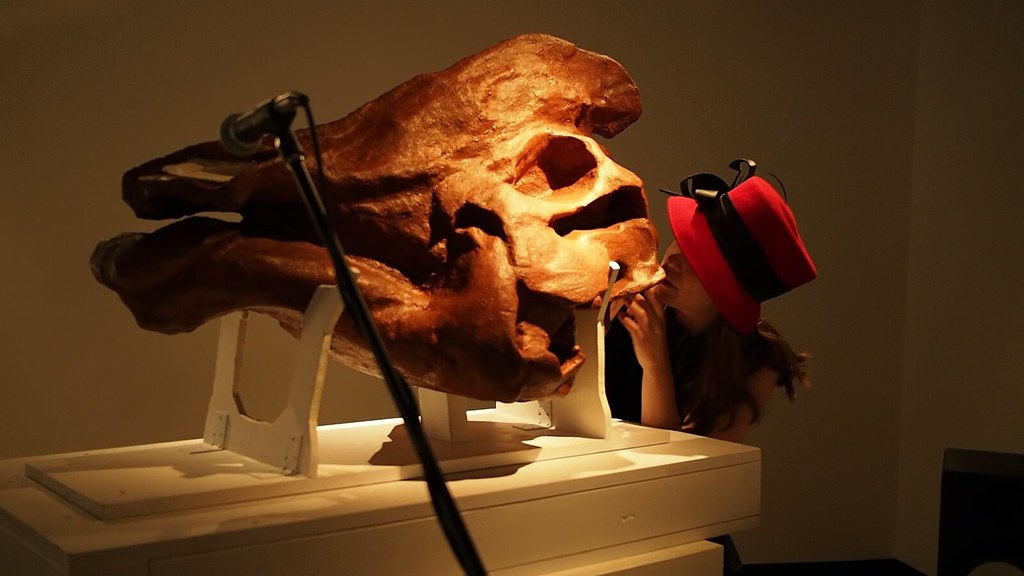
Perhaps the most compelling theory regarding Parasaurolophus’s crest involves its acoustic capabilities. The intricate tube system within the crest essentially formed a natural resonating chamber, similar in principle to brass musical instruments. Computer modeling of the crest’s internal structure has allowed scientists to recreate the sounds these dinosaurs might have produced, resulting in deep, resonant calls that would have carried for considerable distances across prehistoric landscapes. Each species of Parasaurolophus had slightly different crest shapes and internal structures, suggesting they may have produced distinct calls – effectively creating a unique “voice” for each species. These vocalizations likely served multiple purposes, from coordinating herd movements to warning of predators or attracting mates during breeding seasons. The low-frequency sounds produced would have been particularly effective for long-distance communication in the forested environments these dinosaurs inhabited, giving them a significant advantage in maintaining social cohesion across expansive territories.
Thermoregulation: A Cool Theory
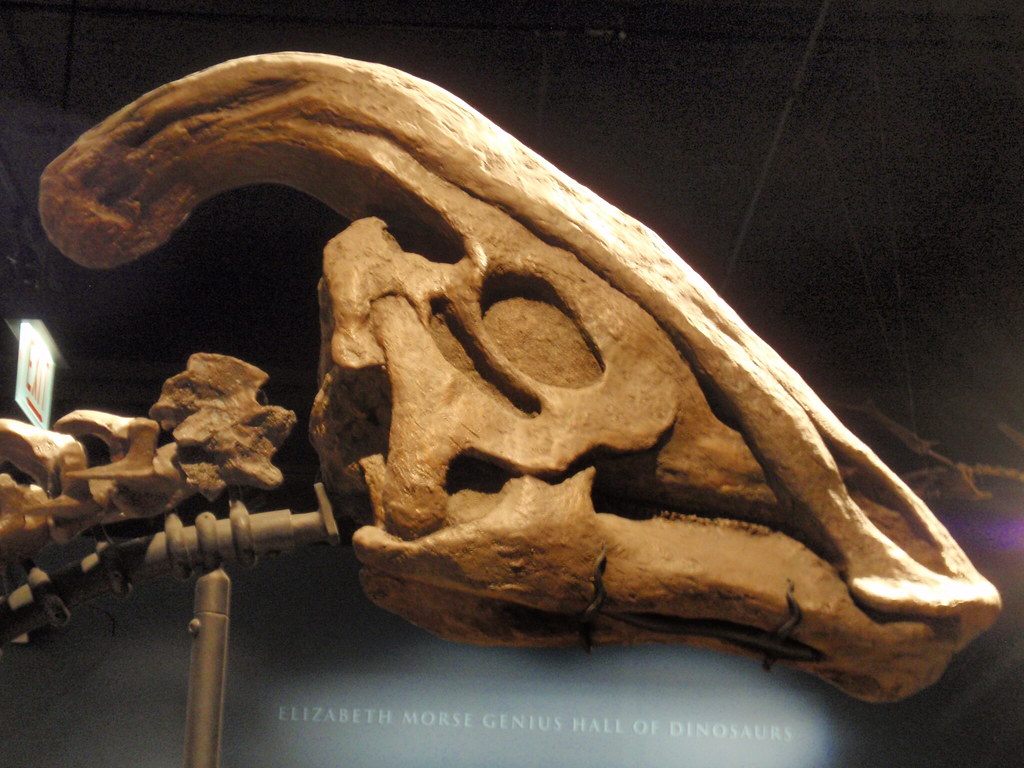
Beyond its acoustic properties, the Parasaurolophus crest may have played a crucial role in regulating body temperature. The extensive network of blood vessels running through the crest’s thin bony walls would have provided an excellent mechanism for heat exchange. When overheated, increased blood flow to the crest would allow excess body heat to radiate away into the surrounding air – functioning similarly to how modern elephants use their large ears for cooling. Conversely, in cooler conditions, the dinosaur could reduce blood flow to the crest to conserve heat. This dual-purpose system would have been particularly valuable for a large-bodied animal living in the seasonal climates of the Late Cretaceous period. Recent studies examining the microscopic structure of the crest bones have revealed evidence of extensive vascularization, lending further support to this thermoregulatory hypothesis. The effectiveness of this system might explain why natural selection favored the development of such an elaborate structure despite its apparent impracticality.
Sexual Selection: The Peacock Effect
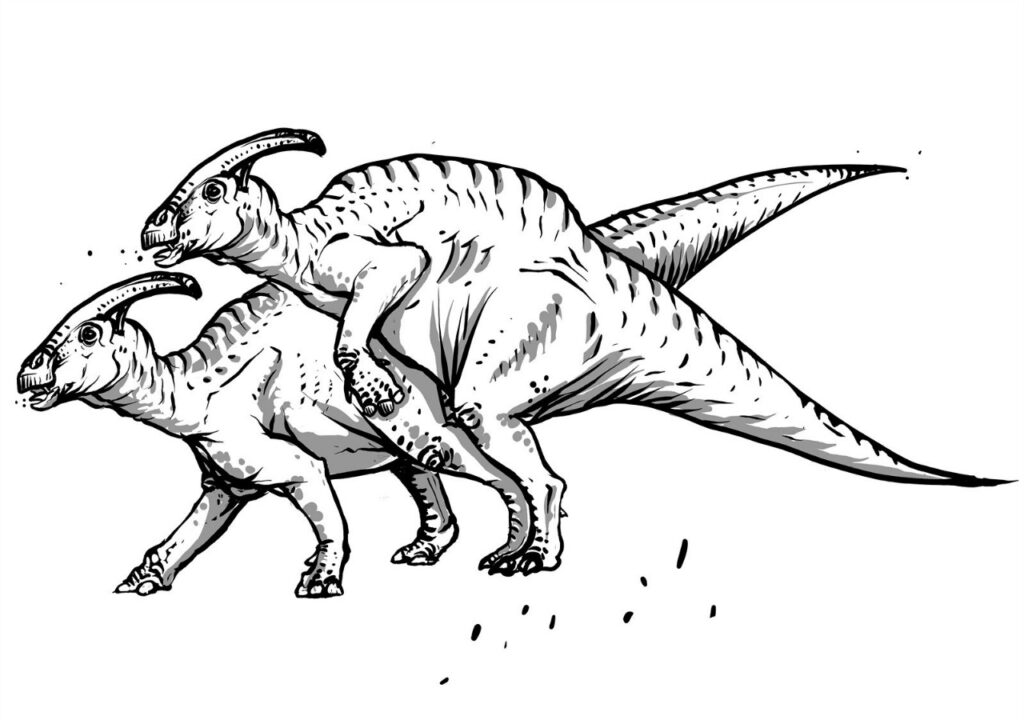
The pronounced difference in crest size between male and female Parasaurolophus specimens strongly suggests sexual selection played a major role in the evolution of this bizarre feature. Similar to a peacock’s tail or a deer’s antlers, the impressive crest likely functioned as a visual signal of genetic fitness to potential mates. Larger, more symmetrical crests might have indicated superior health and genetic quality, making those individuals more attractive as reproductive partners. The acoustic properties of the crest would have enhanced this display function, with deeper, more resonant calls potentially signaling greater physical strength or maturity. Fossil evidence indicates that juvenile Parasaurolophus had much smaller crests that grew dramatically as they reached sexual maturity, further supporting the sexual selection hypothesis. This evolutionary mechanism explains how such an apparently impractical structure could become more elaborate over time, even if it slightly hindered the animal’s mobility or made it more visible to predators.
Species Diversity: Not Just One Crested Wonder
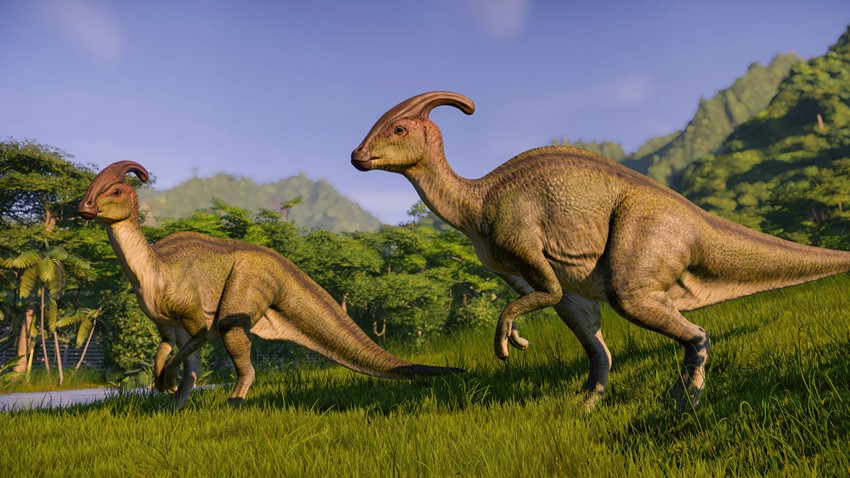
While often discussed as a single entity, Parasaurolophus actually comprised at least three distinct species, each with variations in their remarkable headgear. Parasaurolophus walkeri, discovered in Alberta, featured the most extreme crest development, with an elongated tube that curved gently backward. Parasaurolophus tubicen, found in New Mexico, possessed a straighter, more robust crest with slightly different internal chamber configurations. The third recognized species, Parasaurolophus cyrtocristatus, displayed a shorter, more curved crest than its relatives. These differences weren’t merely cosmetic – they resulted in distinct acoustic properties and potentially different visual displays. The geographic distribution of these species suggests they evolved separately to occupy different ecological niches across western North America. Recent fossil discoveries hint at the possibility of additional Parasaurolophus species awaiting formal classification, suggesting this group might have been more diverse than previously recognized.
Lifestyle and Habitat: Living with a Headpiece
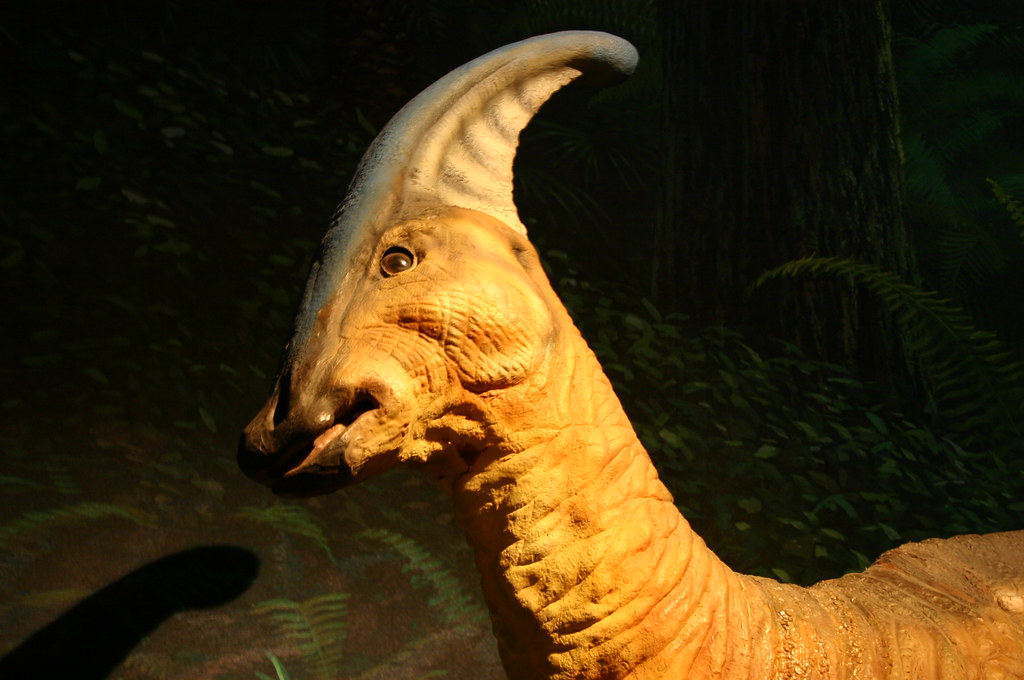
Despite its flamboyant headgear, Parasaurolophus led a relatively conventional hadrosaurid lifestyle as a large herbivorous dinosaur. Standing approximately 10 feet tall at the hip and reaching lengths of up to 33 feet, these dinosaurs walked on both two legs and four, likely switching postures depending on whether they were feeding or moving quickly. Their habitat primarily consisted of the coastal lowlands and floodplains of western North America during the Late Cretaceous period, roughly 76-73 million years ago. The environment was warmer than today’s, with seasonal variations and extensive forests dominated by conifers, ginkgos, and early flowering plants. Parasaurolophus likely traveled in herds for protection against predators like Tyrannosaurus and Daspletosaurus, with their distinctive crests helping individuals recognize members of their own species from a distance. Their broad, duck-like bills and hundreds of grinding teeth allowed them to process a wide variety of plant materials, from low-growing ferns to higher branches they could reach by standing on their hind legs.
The Biomechanical Puzzle: Carrying the Crest

The sheer size of the Parasaurolophus crest presents a fascinating biomechanical challenge that paleontologists have worked to understand. Adding such a large projection to the skull would have significantly altered the dinosaur’s center of gravity and placed considerable strain on its neck muscles. To compensate, Parasaurolophus developed specialized neck vertebrae with enlarged neural spines that provided attachment points for powerful muscles to support the weighty headgear. Computer modeling suggests that the hollow nature of the crest was crucial in minimizing its weight while maximizing its display and acoustic functions. The dinosaur’s skull also featured reinforced attachment points where the crest connected to the main cranial structure, distributing mechanical stress across a broader area. Despite these adaptations, younger Parasaurolophus individuals had proportionally smaller crests, which gradually expanded as their neck and skull muscles developed during growth. This gradual development prevented the crest from becoming a liability during the vulnerable juvenile stage while allowing for the full impressive display in sexually mature adults.
Predator-Prey Dynamics: A Visible Target
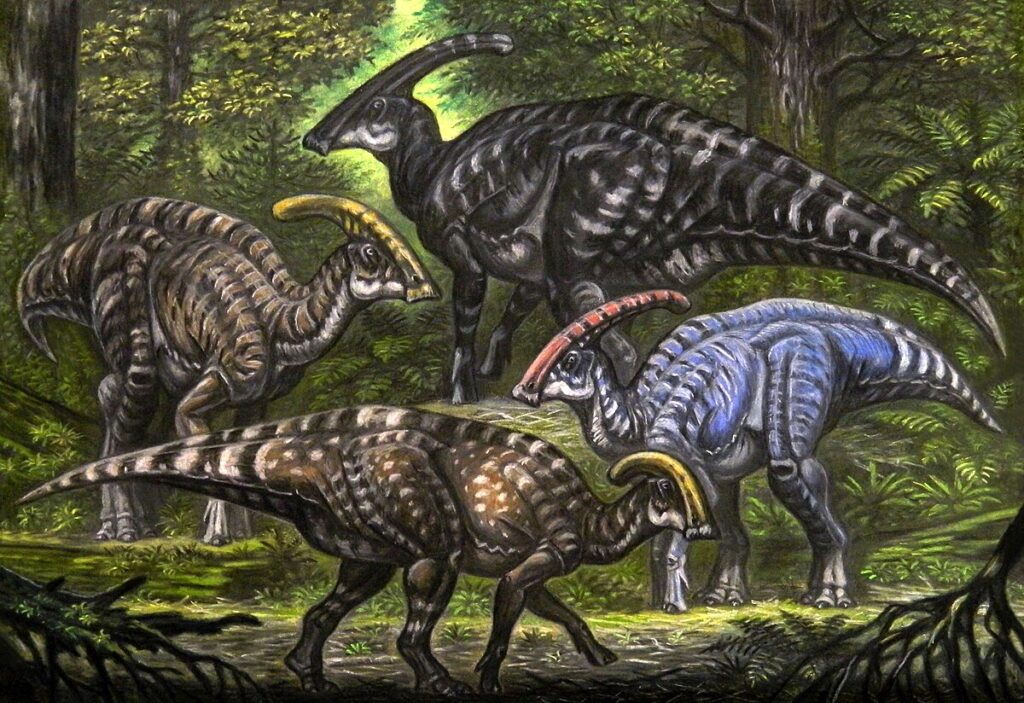
The elaborate crest of Parasaurolophus presents an evolutionary paradox: while beneficial for communication and mate attraction, it potentially made these dinosaurs more vulnerable to predation. The prominent headgear would have made individuals more visible in their environment and could have restricted their ability to hide effectively from threats. However, paleontologists believe that Parasaurolophus compensated for this disadvantage through several adaptations. Their powerful hind legs enabled rapid acceleration and sustained running speeds that could outpace many predators of their time. The acoustic properties of their crests allowed them to sound effective alarm calls that could alert entire herds to danger from considerable distances. Fossil evidence of healed injuries on Parasaurolophus specimens suggests they sometimes survived predator attacks, indicating their defensive strategies were reasonably effective. Additionally, their large body size meant that fully grown adults would have been challenging prey even for apex predators like Tyrannosaurus rex, with only the youngest or weakest individuals being routinely vulnerable to predation.
Growth Patterns: From Modest to Magnificent
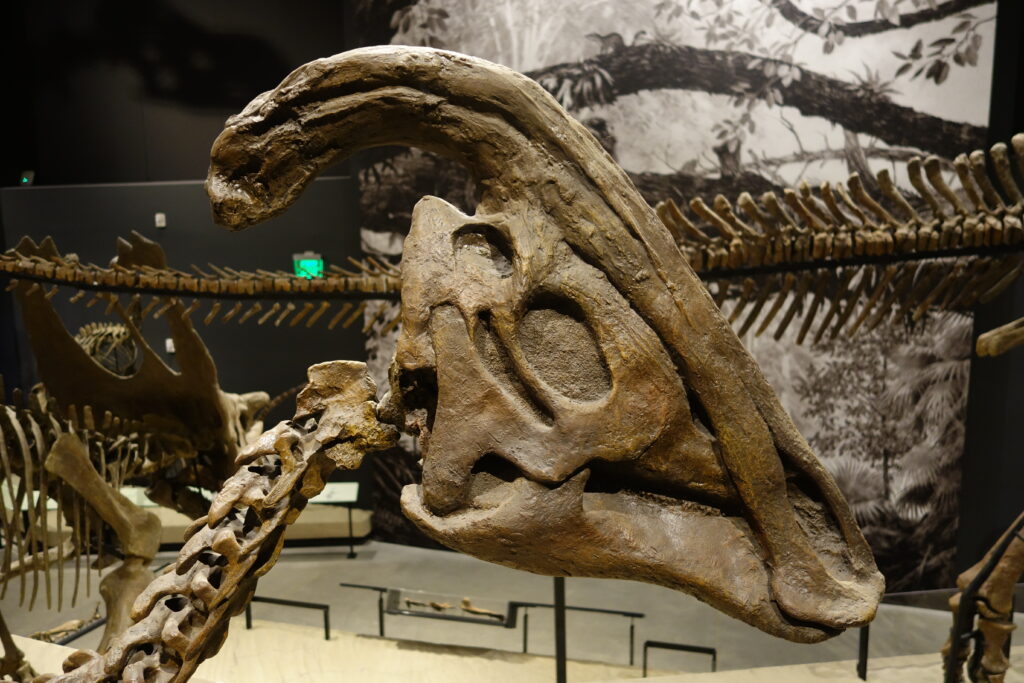
The development of the Parasaurolophus crest throughout its lifespan reveals fascinating insights into this dinosaur’s biology and social structure. Hatchlings emerged with virtually no crest at all, possessing only a slight ridge on their skulls where the dramatic structure would eventually grow. During the juvenile stage, the crest began developing gradually, remaining relatively modest until the onset of sexual maturity. At this point, a dramatic growth acceleration occurred, with the crest extending rapidly to reach its full adult proportions. This growth pattern aligns perfectly with the sexual selection hypothesis, as the crest would reach its most impressive form precisely when the individual began seeking mates. Growth ring analysis of fossilized crest material suggests that full crest development typically occurred between 7-10 years of age, indicating a relatively fast growth rate compared to some other large dinosaurs. Interestingly, microscopic examination of crest bone tissue shows that growth slowed dramatically once adult size was reached, but never completely ceased – suggesting the crest continued to grow slightly throughout the dinosaur’s life, potentially as an ongoing indicator of age and status within the herd.
Evolutionary Context: The Hadrosaurid Family Tree
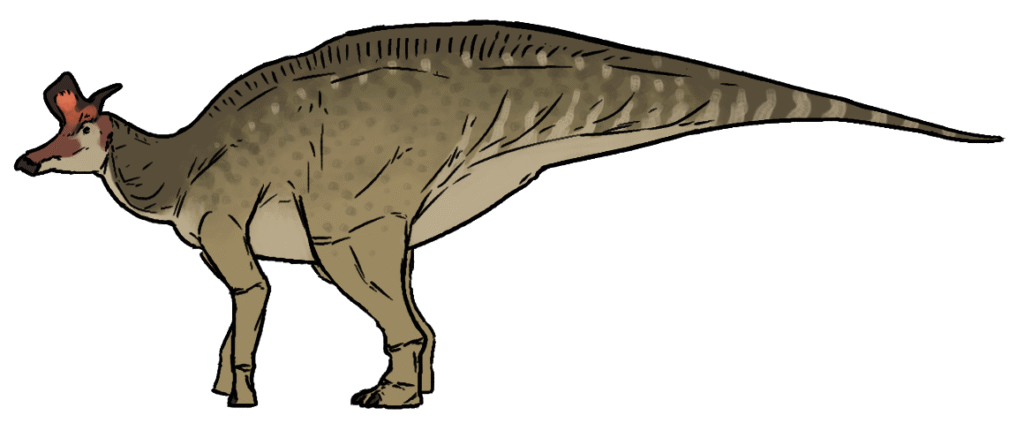
Parasaurolophus belongs to the Lambeosaurinae subfamily of hadrosaurid dinosaurs, commonly known as the “hollow-crested hadrosaurs.” This evolutionary lineage produced some of the most elaborate cranial structures in dinosaur history, with relatives including Corythosaurus with its helmet-like crest and Lambeosaurus with its hatchet-shaped headgear. The common ancestor of these dinosaurs likely possessed a modest cranial crest that was subsequently elaborated in different directions through separate evolutionary pathways. Comparative anatomical studies reveal that while all lambeosaurines had hollow crests connected to their nasal passages, Parasaurolophus took this adaptation to an extreme, developing the longest and most complex version. Fossil evidence suggests this subfamily evolved from earlier, crestless hadrosaurs approximately 85-80 million years ago, with the most dramatic crest elaborations occurring during the Late Cretaceous period. The relatively rapid diversification of crest shapes among closely related species suggests these structures were under strong selective pressure, likely driven by species recognition needs and sexual selection forces that promoted distinctive headgear for each evolutionary lineage.
Modern Research: New Light on Ancient Questions
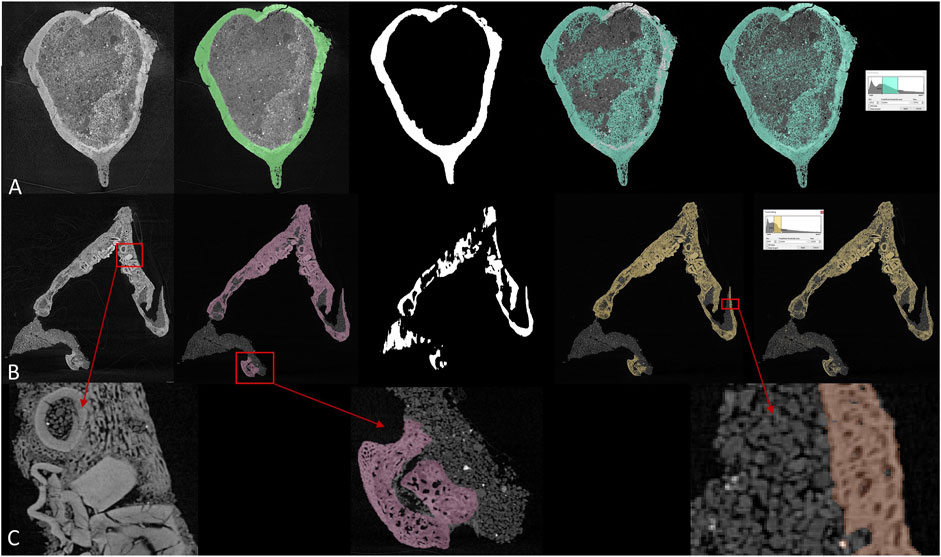
Contemporary research techniques have revolutionized our understanding of Parasaurolophus and its enigmatic crest. Advanced CT scanning technology now allows paleontologists to examine the internal structure of fossilized crests in unprecedented detail without damaging the specimens. These scans have revealed the precise geometry of the nasal passages, enabling acoustic engineers to create sophisticated computer models that accurately reproduce the sounds these dinosaurs likely made. Finite element analysis, a computer modeling technique borrowed from engineering, has helped scientists understand the biomechanical stresses the crest placed on the skull and how the dinosaur’s anatomy compensated for this unusual feature. Isotopic analysis of preserved bone tissues provides insights into the dinosaur’s metabolism and how blood flow through the crest might have contributed to thermoregulation. Perhaps most exciting is the application of soft tissue reconstruction techniques that combine anatomical knowledge with comparisons to living relatives like birds and crocodilians, allowing researchers to create increasingly accurate visualizations of how Parasaurolophus appeared in life, complete with the keratinous covering that would have encased its magnificent crest.
The Legacy of a Prehistoric Icon
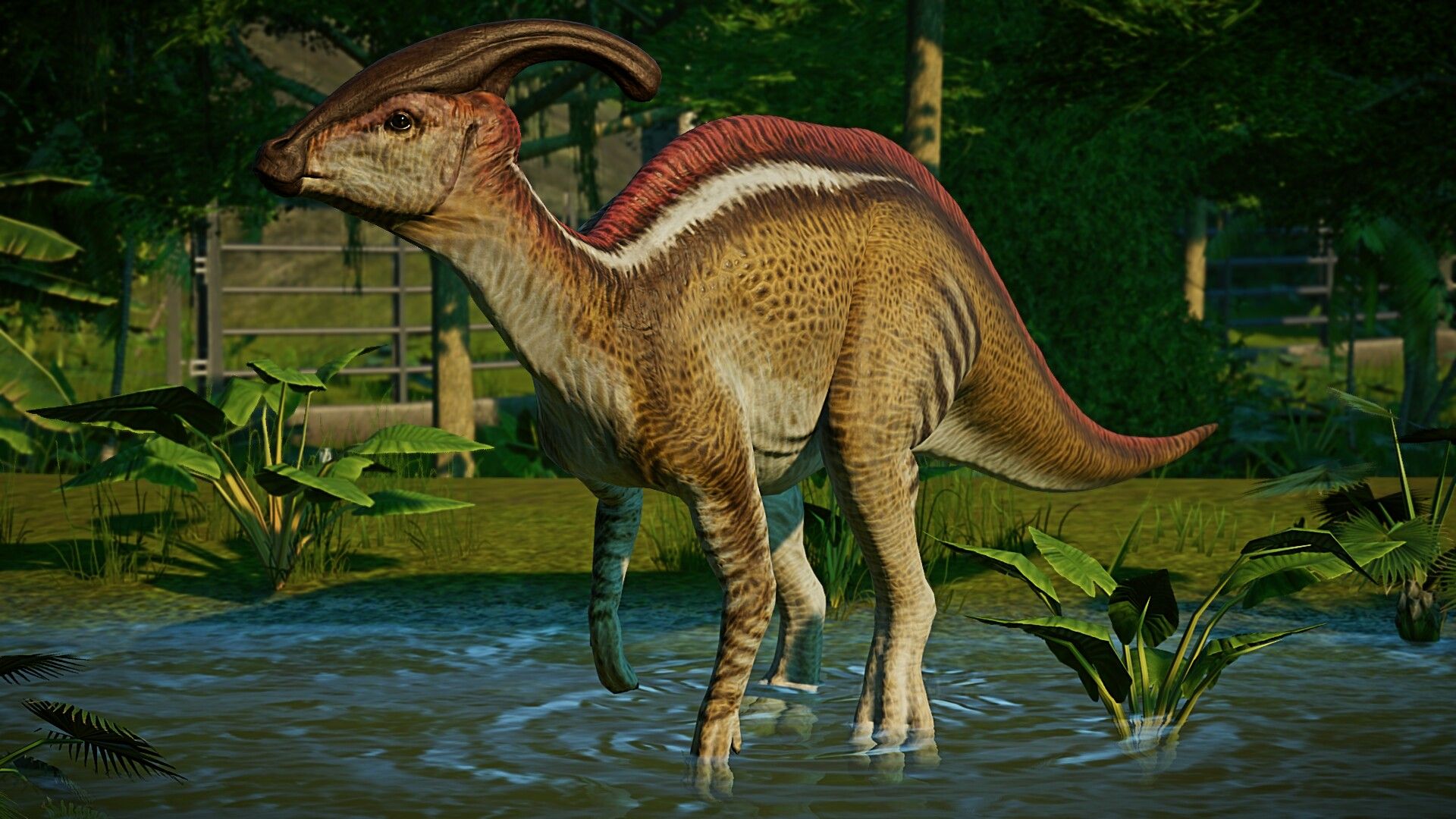
Beyond its scientific significance, Parasaurolophus has cemented itself in popular culture as one of the most recognizable dinosaurs. Its distinctive silhouette has appeared in countless books, museums, and documentaries about prehistoric life. The dinosaur featured prominently in the Jurassic Park franchise, introducing generations of moviegoers to its unique appearance. This cultural visibility has made Parasaurolophus an ambassador species that attracts public interest in paleontology and evolutionary biology. The ongoing scientific debates about its crest function perfectly illustrate how paleontologists use comparative anatomy, biomechanics, and evolutionary theory to understand extinct organisms. Museum exhibits featuring Parasaurolophus often use this dinosaur to demonstrate concepts like sexual selection and specialized adaptation, making it an ideal teaching example. For scientists, the continued research into this unusual creature represents the perfect intersection of solving technical puzzles while capturing public imagination, ensuring that this dinosaur with its logic-defying headgear will remain a focus of both scientific inquiry and popular fascination for generations to come.
The story of Parasaurolophus reminds us that evolution doesn’t always follow predictable paths. What seems illogical at first glance – an enormous tubular crest that could potentially hinder an animal’s survival – reveals itself as a sophisticated multifunctional adaptation when examined more closely. This remarkable dinosaur demonstrates how natural selection can produce elaborate structures that serve multiple purposes simultaneously: species recognition, mate attraction, communication, and physiological regulation. As our research methods continue to advance, we may uncover even more functions for this seemingly impractical headgear. The Parasaurolophus stands as a testament to the endless creativity of evolutionary processes and the complex interplay between practical function and social signaling that shapes all living things – even those that walked the Earth millions of years before humans evolved to study them.

